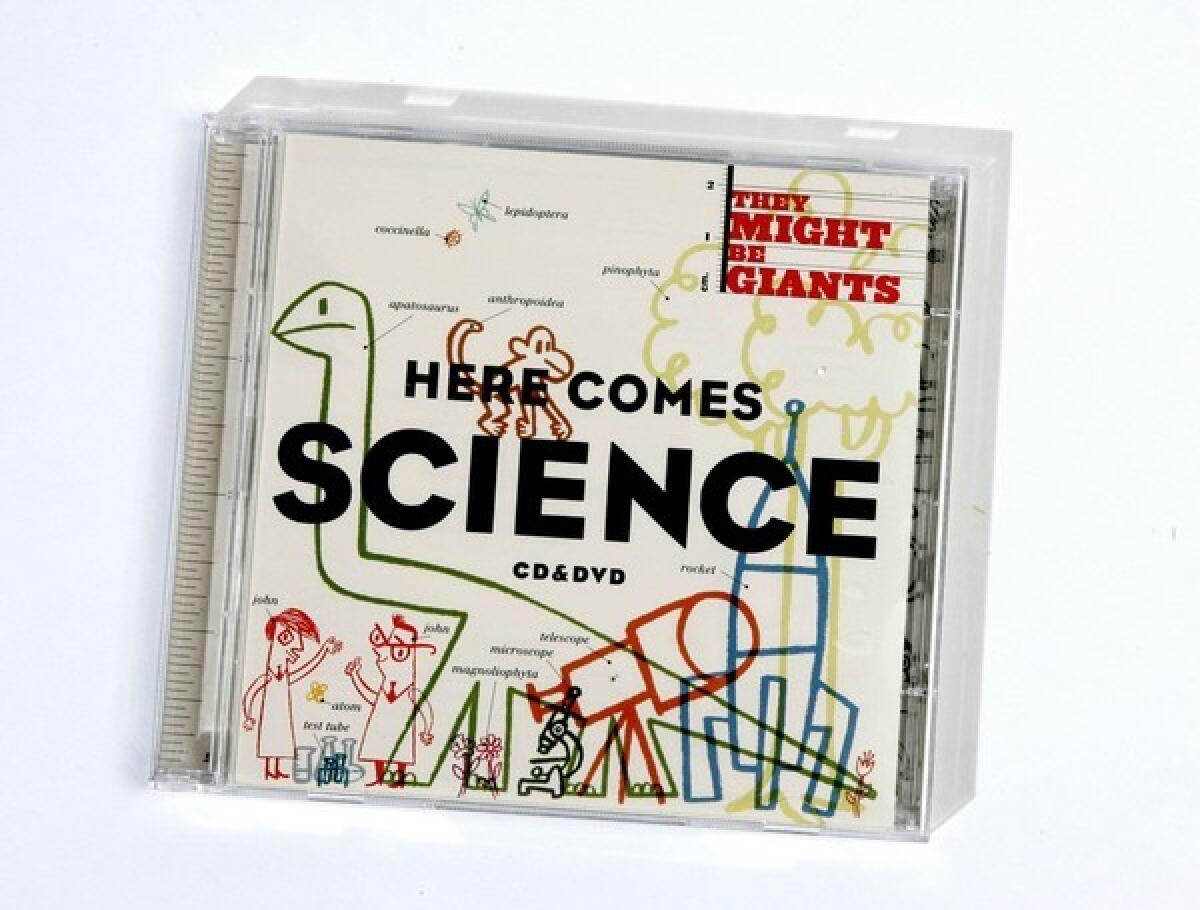For kids, it all starts with the joy of curiosity

Here Comes Science
They Might Be Giants
Disney Sound: $18.98
Lately, my 3 1/2 -year-old daughter has been asking lots of questions about blood. “Do I have it?” “How about my best friend, Elizabeth?” “Mommy, did you know that blood is good for you?”
The impetus for these inquiries is “The Bloodmobile,” Track 4 on the excellent new children’s CD “Here Comes Science” from They Might Be Giants. With a catchy tune and simple language, it explains how blood transports oxygen, nutrients, disease-fighting antibodies, hormones and waste products to the tissues that need them throughout the body. I have to admit this song gave me a new appreciation for the circulatory system.
They Might Be Giants made its name composing quirky songs for grown-ups about bird-shaped night lights, Turkish capitals and the monolith from the movie “2001: A Space Odyssey.” But the group also put out several CDs aimed at the school-age set, including “No” and “Here Come the ABCs.”
As exemplars of the genre known as “nerd rock,” perhaps a science-oriented CD was inevitable.
Other tracks on “Here Comes Science” explain how DNA instructs cells to grow into “some moss or a shrew, algae or a kangaroo” and how humans are related to chimps, the rest of the animal kingdom and even plants, fungi and bacteria. It comes with an entertaining DVD.
-- Karen Kaplan
My Silly Body and Book
P. Hanson and Eric Nagourney
Workman Publishing Co.: $13.95
Sure, you could get your child a toy car or monster truck for the holidays. Or you could introduce him or her to the most amazing machine of all: the human body.
“My Silly Body and Book” offers a two-part road map to what goes on beneath our skin. Young children are drawn in to the life-sized cardboard boy with small doors that are fun to open. I lost track of how many times my daughter peeled back the bandage on the boy’s leg to admire the scab forming underneath. When that got old, she moved on to doors that revealed the muscles, blood vessels and nerve fibers that make the body work.
The flip side displays a skeleton, along with interesting factoids. Among them: Kids can rest assured that no one is stealing their bones. Though they are born with about 300, many of them fuse together as they grow, leaving them with only 206 as adults.
The cardboard body folds neatly into a folder that also stores a “user’s manual,” which is appropriate for older kids. The 64-page book describes the major organ systems, how the immune system fights germs, and even takes a stab at explaining genetics. Simple experiments help kids understand how their eardrums register invisible sound waves and how saliva breaks down starchy foods into sugar we need for energy.
-- Karen Kaplan
More to Read
The biggest entertainment stories
Get our big stories about Hollywood, film, television, music, arts, culture and more right in your inbox as soon as they publish.
You may occasionally receive promotional content from the Los Angeles Times.










